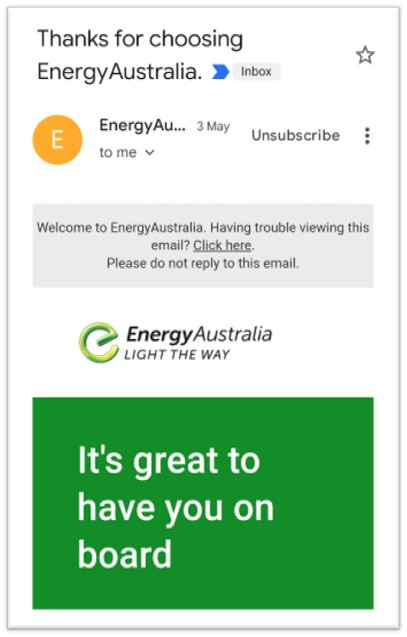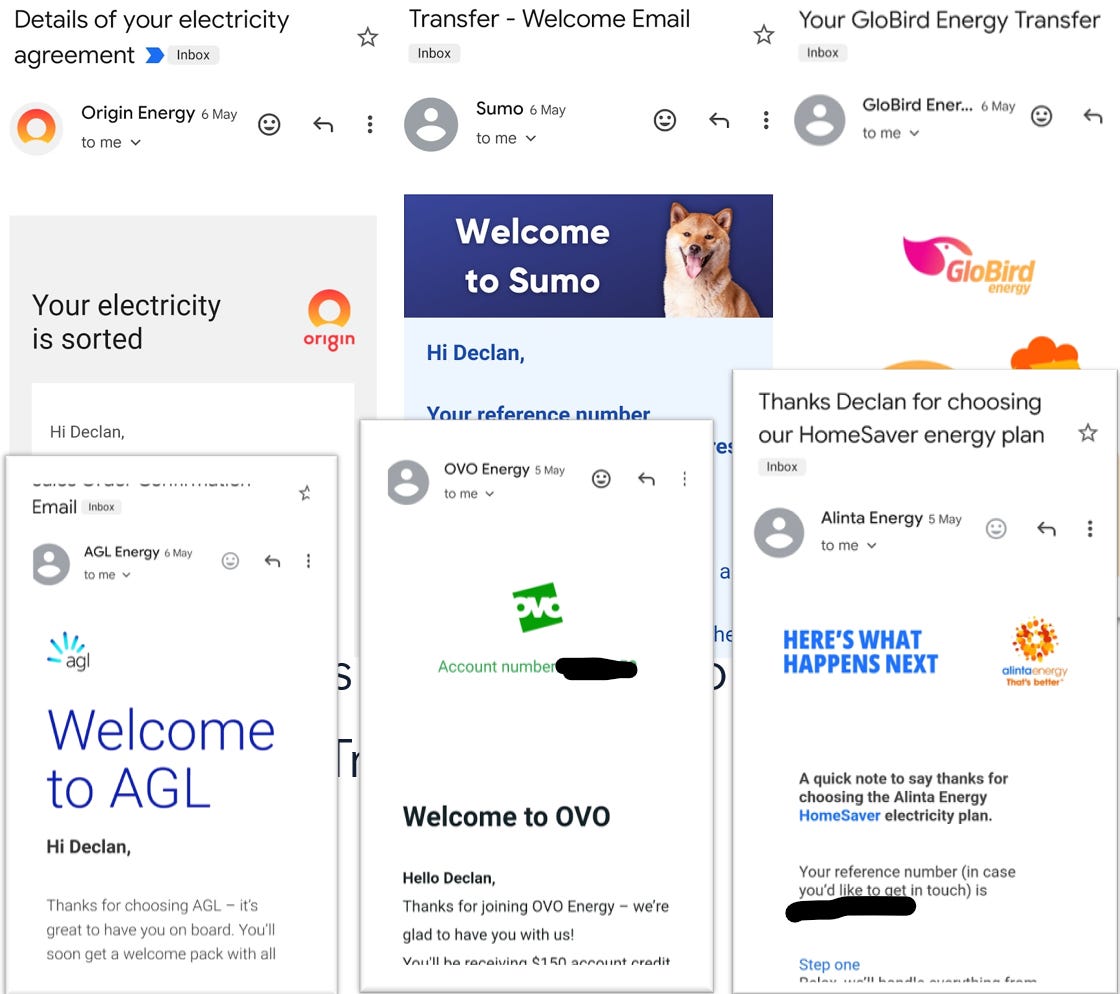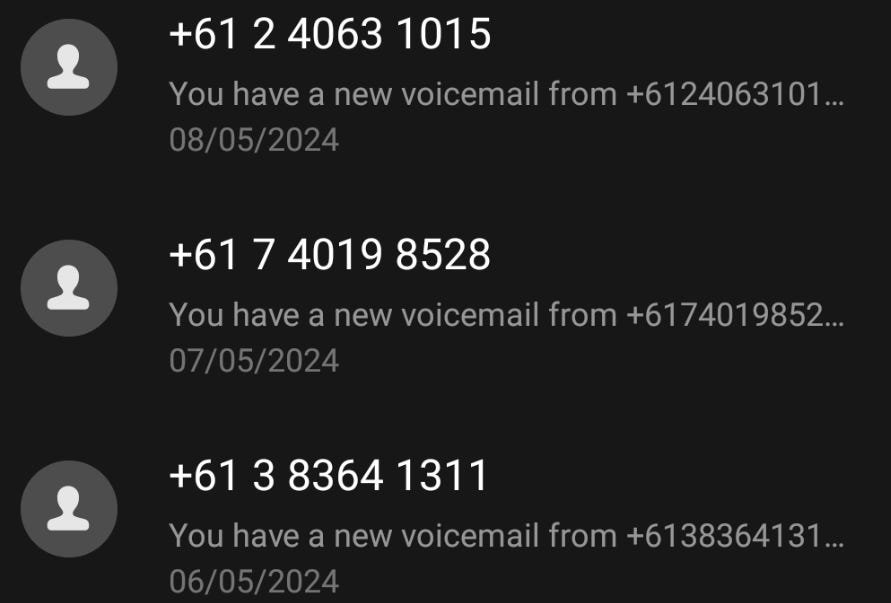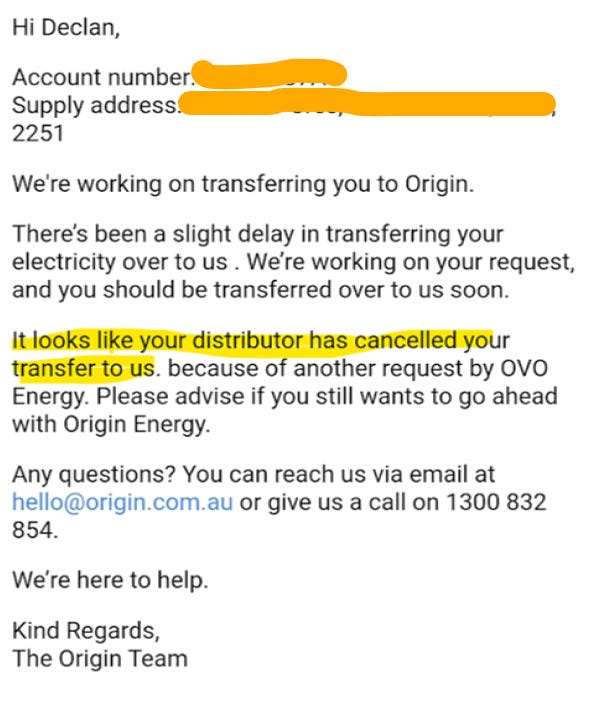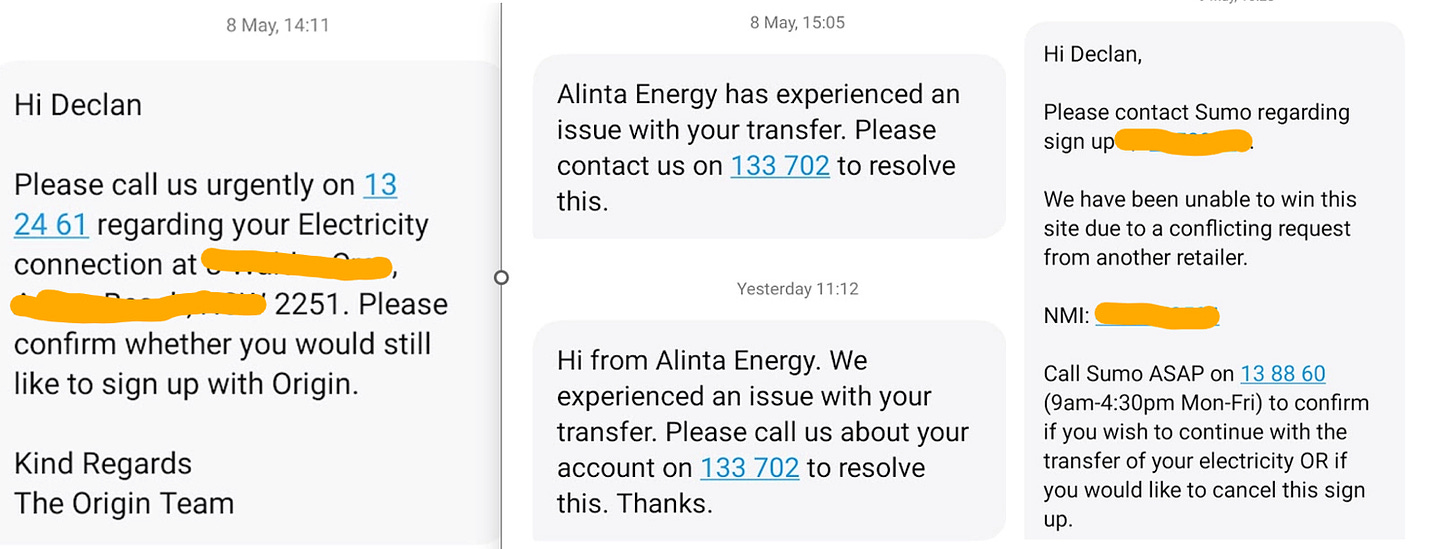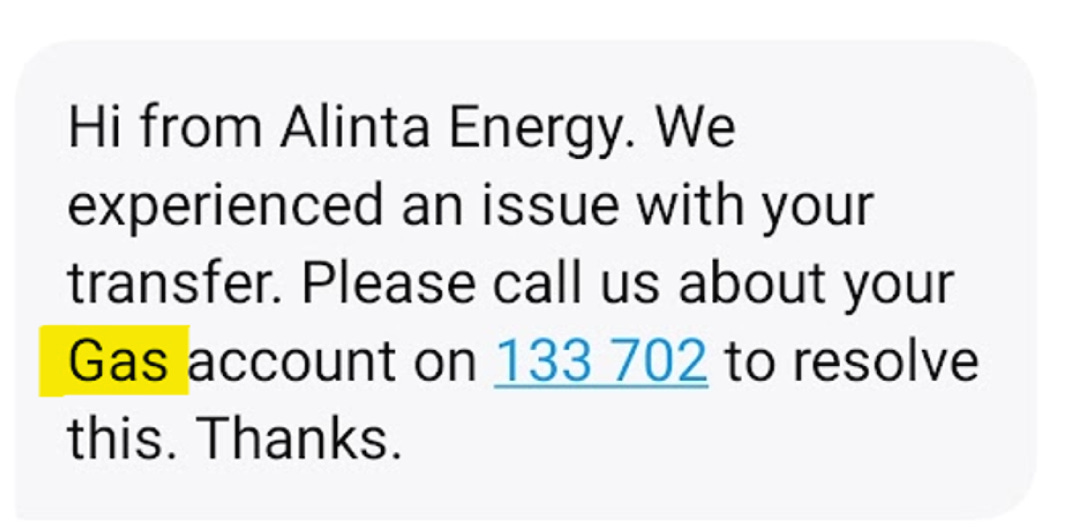Hey everyone,
It’s been a minute! This post is a summary and update of a presentation I gave earlier in the year. Alex and I have got a few things on the boil and the Christmas holidays will be a good chance to get some more of our explainer articles written. Thanks for suffering through our inconsistency!
Also this post is long due to a series of photos - it’s a fairly quick read though.
Retail therapy
When was the last time you changed your electricity retailer? If you’re reading this, you fall into the subset of people who are somewhat interested in electricity markets. Despite that, I would hazard a guess that quite a few of you haven’t changed your electricity retailer in a few years.
In case you didn’t know, for most households in the National Electricity Market (NEM) there is retail competition. You are able to choose who sells you your electricity, just like you can choose your internet or phone provide.1
There are some long, serious questions about retail markets that would be great fodder for a blog post. How well are they designed? Are they good for consumers? Are they going to become more important?2 I want to ignore almost all of those for this post and focus in on a specific issue I encountered a while ago. Specifically, changing to a new electricity retailer. Let’s go shopping.
The ask
An unnamed friend asked which electricity retailer they should sign up for. Normally, I would just give a predetermined answer. But this time I decided to be an unseasonably good friend and I did some digging. I looked at their usage, solar etc., asked them about when they thought they’d typically be home, etc. and looked around to find their best deal. For this one friend, I’d solved one of the main challenges people have with retail electricity markets - how to compare and choose. I gave my friend the answer and went about my day. Only, when I asked about it six months later, they told me they hadn’t been bothered to switch because the process would be painful. This killed me because this is the easiest part of the process! Me not
Taking it too far
This got me to thinking - how easy is it to change retailer? People think it’s hard - is just a perception of something that’s not real? For most people, it is a very unexciting process and the fear of the unknown might outweigh the upsides of a better deal.
As a consumer, I’ve changed retailer regularly. As someone who works at a retailer, I’ve got a decent understanding of the back-end processes that make it simple for the consumer. For the consumer, the process is really pretty simple - you don’t need to talk to your current retailer, you just need to go to your new retailer with a piece of ID and within ~ 3 mins you can be signed up. The retailer, AEMO and the local distributor sort everything out for you remotely.
But what’s the limit? How robust is this system? I think I got close to finding it.
Earlier this year, I travelled to South Korea. Before I left, I changed my retailer to EnergyAustralia. While sitting in my hotel room in Busan (appropriately, at the Busan Business Hotel!), I simultaneously signed up to six different retail offers - Origin Energy, Ovo, Sumo, Alinta, AGL and Globird.3 I set myself two ground rules:
I wouldn’t respond to any messages from the retailers.
If they did somehow get me on the phone, I would let them off the hook and say I accidentally signed up.
What happened?
First thing first - I got my welcome email from EnergyAustralia.
Then, after I switched to those other retailers, their welcome emails poured into my inbox. This was the easy part.
These emails were followed by a bunch of voicemails.
This is where things started to drift off the rails. First, Origin Energy said the transfer is being delayed because the distributor (for me, Ausgrid) had blocked it due to the OVO transfer request.
Following my rules, I ignored this email. Then I started getting texts. These ones from Origin, Sumo and Alinta.
At this point, the customer transfer systems were clearly getting jammed and throwing up flags for these retailers. It’s hard to know exactly when it shifted from automated systems to manual interventions - based on the texts and voicemails, it did seem to be quite dependent on the retailer processes. I also got a text from Alinta about my gas account, which doesn’t exist.
At this point, it became quite difficult to keep track of who my retailer was. I was able to piece it together after the fact, and chuck it all into a spreadsheet. Somehow, amongst the machinations of what I kicked off, I was able to get myself transferred from EnergyAustralia to OVO to Globird to AGL. Funnily enough, in this example of our competitive retail market, I think AGL won because they were the slowest.
Collect your receipts
Why inflict this on myself? I wouldn’t necessarily recommend it to anyone else, but I do think it still highlights an underappreciated aspect of the NEM. Despite me throwing a huge spanner in the works, I ended up with an electricity retailer and I didn’t have to talk to a single person. Despite their flaws, the fact that we can do this for electricity or internet or other utilities seems kinda incredible right?
Of course, if you think retail electricity markets were a bad idea, this fact isn’t going to redeem them in your eyes. But it does point to the efforts that have been put in to reduce friction across parts of the retail market.
I still love changing retailer regularly. To wrap up, here’s my thoughts on retail shopping.
If you’re not an energy nerd - it’s always worth shopping around. Set yourself a reminder to shop once per year at least. If you don’t know where to start, go to Energy Made Easy or Victorian Energy Compare. If you haven’t changed in a couple of years, don’t stress about picking the perfect offer - change to something new or message your current retailer and threaten to leave and you’ll get a better deal. Some retailers are willing to give up hundreds of dollars to entice you to sign up and you can just leave again after you burn through the bill credits!
If you are interested in electricity markets, try random retail plans! It’s the direct interface between yourself and the electricity market. Get off those basic fixed price plans and experience the thrill of the spot market. Or find some deal that offers you free electricity over lunchtime and see how much free electricity you can use. If you’re outside of Victoria,4 a bunch of the new retailers will install a smart meter for you.
If for nothing else but sheer entertainment, look at what retailers are offering you. When I started working in electricity, retail offers were so bland! You can see how competition drives customer acquisitions, through Netflix or internet bundles or through bribes. You’ll see how retailers advertise themselves - emphasising being Australian, greenwashing themselves, or whatever Alinta’s True Power campaign is meant to mean. You’ll also see new product emerging through the energy transition, centred around EVs, batteries, smart homes and more. Looking at what retailers are putting out there is a good window into how the energy transition will filter through to mass market customers.
P.S. A colleague of mine helped explain to me the nuts and bolts of the customer transfer system. She died unexpectedly earlier this year. This article is dedicated to her as some small way of remembering her for the wonderful colleague and friend that she was.
Exceptions include those in embedded networks (typically apartment buildings) or those living in regional QLD.
On this last question I have lots of thoughts - not least because I work for a retailer…
I apologise if you work for one of these companies and my account came across your desk.
Victoria, unlike the other states, has already rolled out smart meters.






